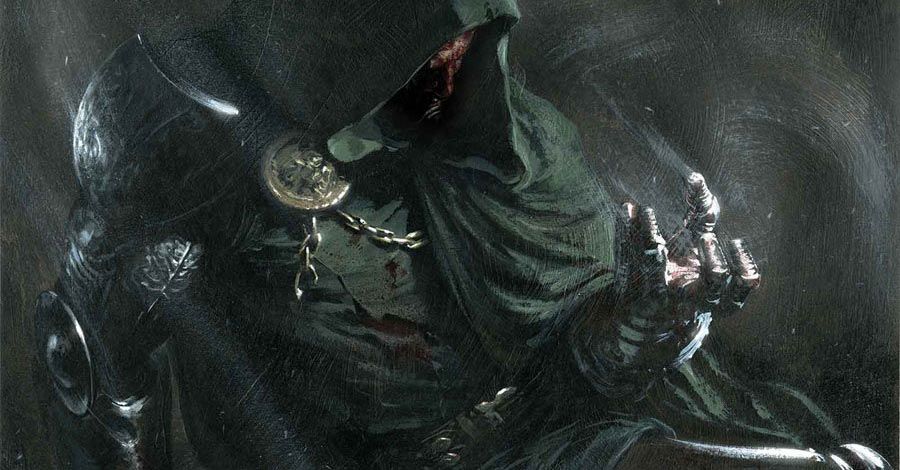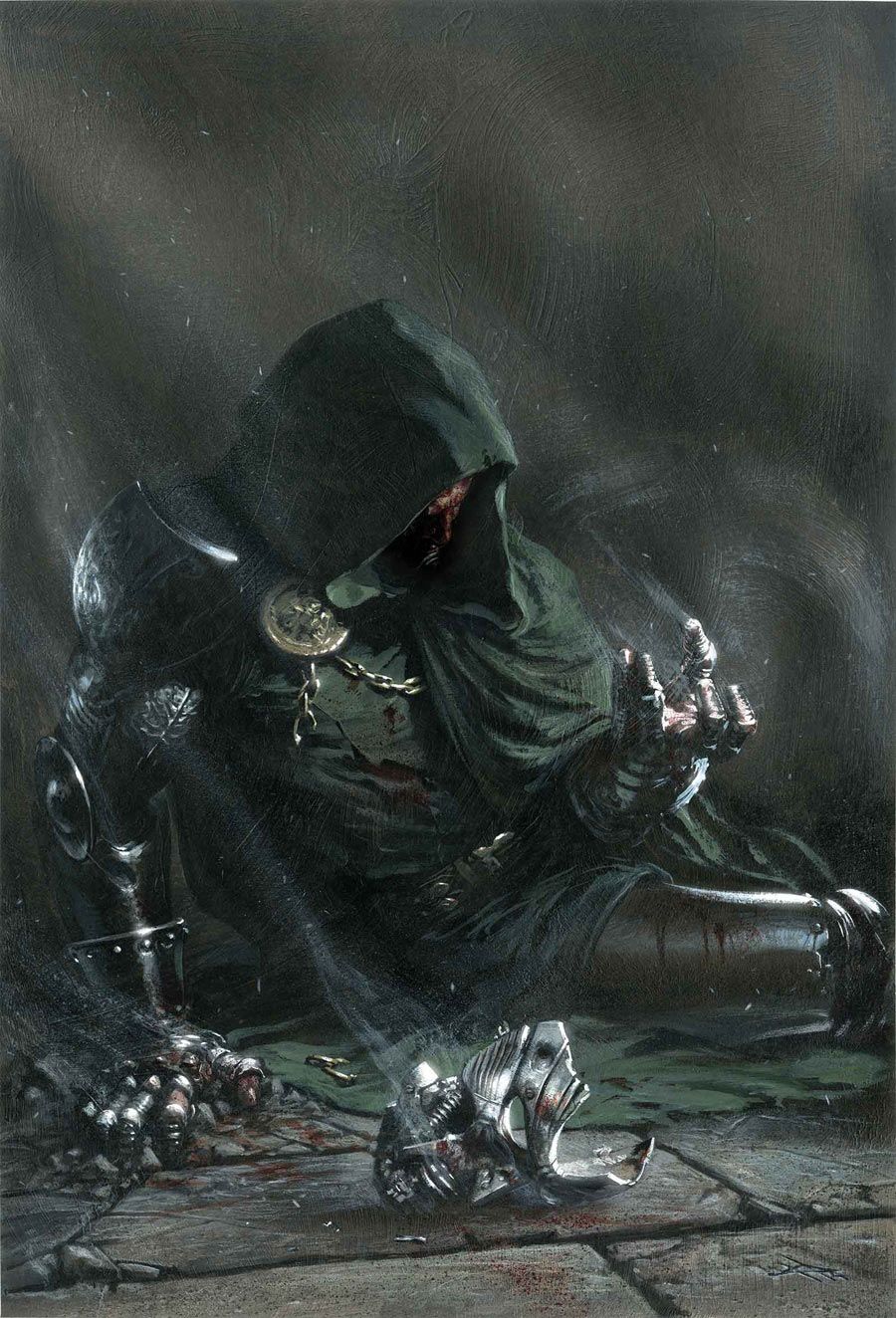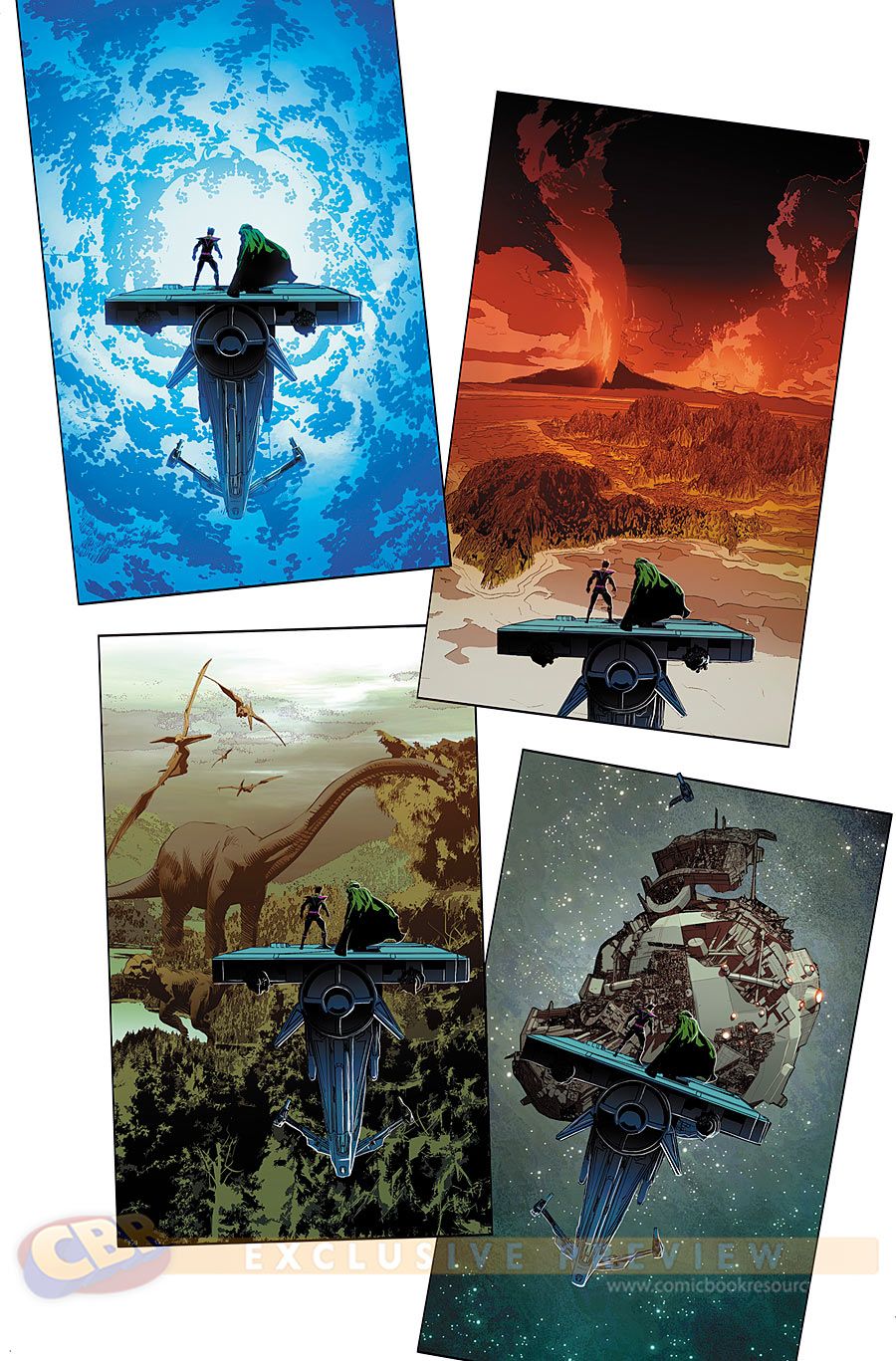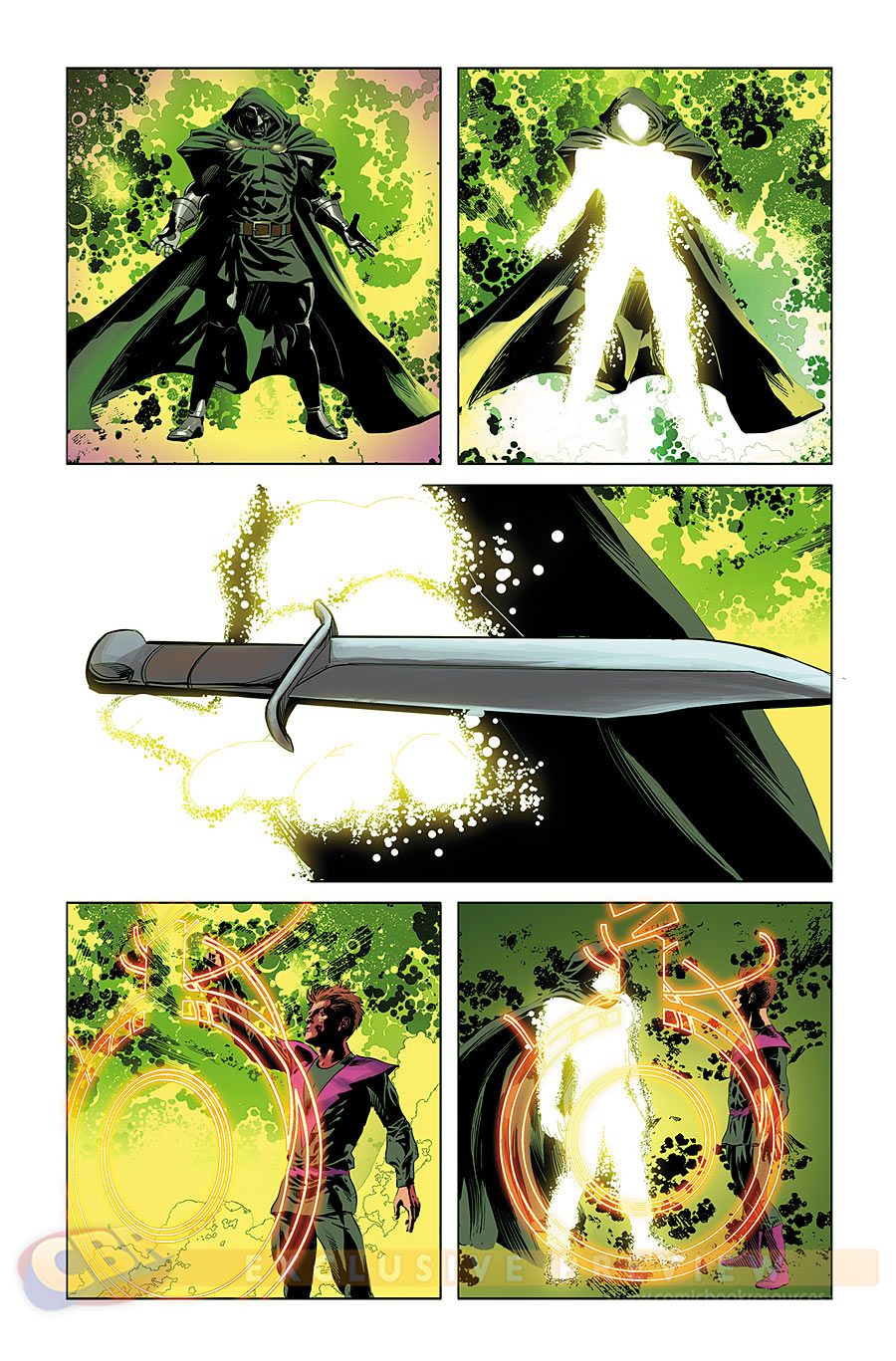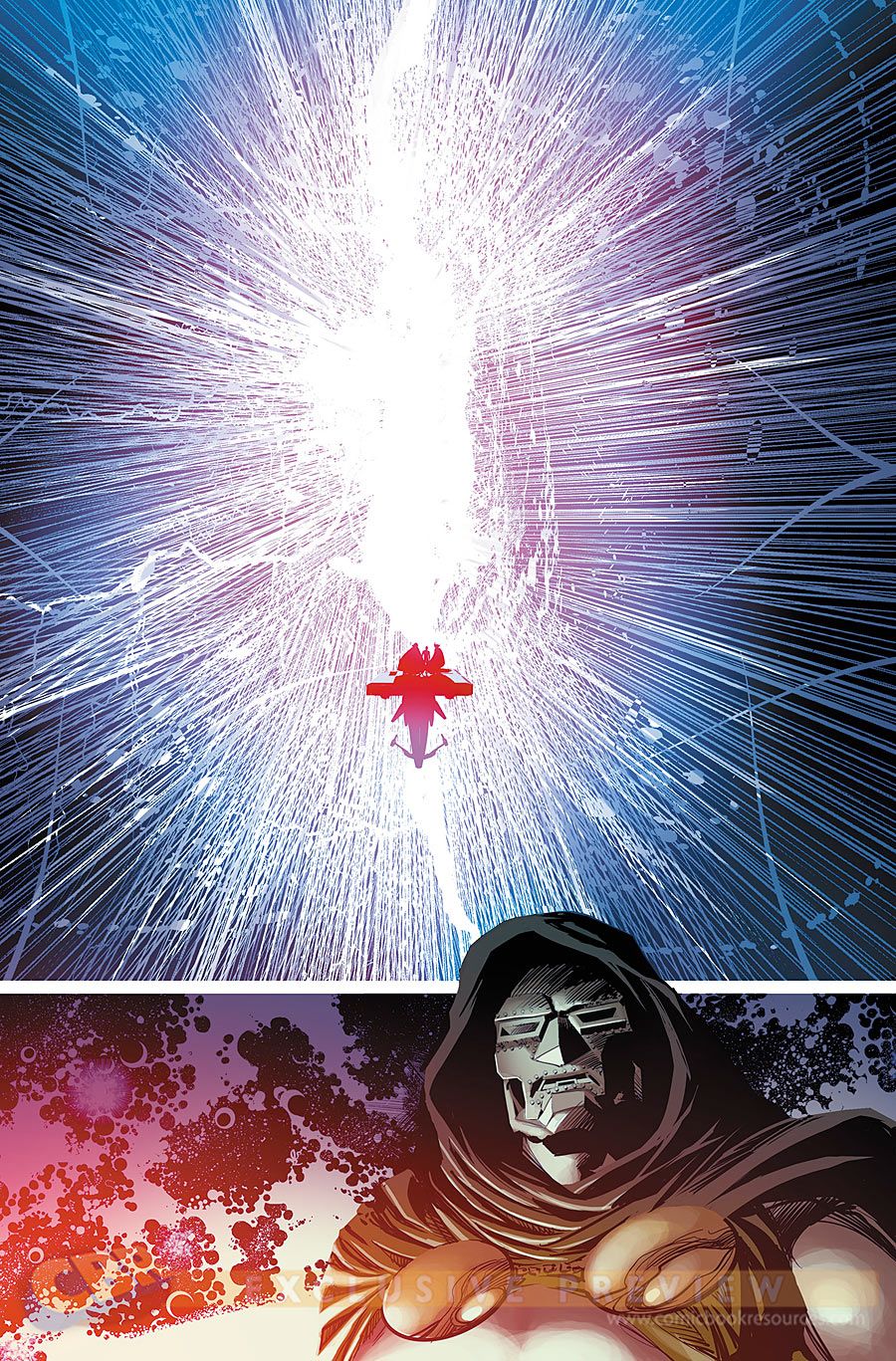The Marvel Universe is doomed -- and not even the Avengers can save it. Earth's Mightiest Heroes have worked tirelessly to stave off an impending multiversal cataclysm, which has taken the form of a mysterious Incursion phenomenon where two dimensions occupy the same spot and ends six hours later with the destruction of one or both realities, a mission that began during writer Jonathan Hickman's Marvel NOW! relaunch of "Avengers" in 2012 and "New Avengers" in 2013.
The battle to stop the Incursions became especially heated and divisive in late 2014 when Hickman jumped both titles eight months into the future with the current "Time Runs Out" storyline and split the Avengers into three different factions. Steve Rogers' squad partnered with S.H.I.E.L.D.; a second team composed composed of genius heroes including Reed Richards, Tony Stark and the Beast were hunted by S.H.I.E.L.D.; and the final group led by Sunspot featured heavy hitters like Thor and Hyperion.
The storyline revealed that Doctor Doom was working to find his own solution to the Incursion problem in his guise as the mysterious Rabum Alal, and the all-powerful race of cosmic beings known as the Beyonders were ultimately responsible for the Incursion phenomenon.
With his final issues of "Avengers" and "New Avengers" looming, CBR News spoke with Hickman in the first of a massive two-part interview about recent "Time Runs Out" revelations, how they'll set the stage for the team's last doomed efforts to save the Multiverse and the Marvel Universe shattering "Secret Wars" event that follows.
CBR News: Jonathan, I wanted to kick off with the reveal that came in "New Avengers" #31 -- that Doctor Doom is Rabum Alal, one of the major and mysterious power players in the Incursion phenomenon. What made you cast him in this role?
Jonathan Hickman: First of all, he's awesome. That's always a factor. I think though that when this is all done and you look back on some of the choices, this one specifically, why we went with Doom, how it ends the "Avengers" run and how it ties into the overall story of "Secret Wars" is going to make a lot of sense.
But if I'm being completely honest, any time I could sneak in a chance to write Doctor Doom I would.
Was including Doom and the Molecule Man, who's working side by side with him, also an homage to the roles those character played in the original 1985 "Secret Wars" series?
Sure, there are some of the obvious connections.
When [editor] Tom Brevoort and I first started talking about doing this years ago, the original concept for what I wanted to do was kind of like "Exiles" meets "Strikeforce: Morituri." That was kind of the book I wanted to write.
As I worked on "Secret Warriors," "Fantastic Four," and the stuff I've done in between, I had a little more success each time. Then when I eventually ended up on the Avengers books it became obvious that if I did that there, it could be a really, really big story. But as to the question, what does this story have to do with the original? How much of it is a convenience of name? I'm not going to answer that, but I will say that as we've pivoted more toward it being a bigger book, we've had more rope.
Certainly things like Doom and Molecule Man working together and some other stuff that you're going to see very soon not only fit perfectly, but it echoed back to the older thing, which is always good.
Doom's role as Rabum Alal and the fact that he's working to stop the Incursions in his own way is interesting because it feels like when you write Doom he's more interested in saving the world instead of conquering it. Is it fair to say that you write Doom as more of an anti-hero than a villain?
Yeah, I've never thought he was a straight villain. Sure, he's incredibly flawed and such a pragmatist that we would often look at what he does as villainy, but I think there's a lot of nobility in him. Much like Magneto in the mutant world, it's very easy to understand where Doom is coming from. So if you can easily understand the perspective of the villain, it becomes very easy to write them from that position. And depending on the kind of story you're telling, perhaps they're not wrong at all. It's that their methods that are.
So, you're not wrong. As we get into "Secret Wars" proper this will get even more interesting.
Hearing you talk about Doom's pragmatism reminded me of the sequence in "Avengers,"#43, where Reed Richards is talking about Tony Stark to Steve Rogers. From your perspective, do Tony and Doom have a lot in common besides being geniuses who wear high tech battle armor?
I think pragmatism can very quickly turn to ruthlessness or a cold, get-the-job-done attitude. And I would say that it's unfair to judge all of the Illuminati guys strictly on how I have written them because I've put them in a situation where they weren't allowed to be heroic at all.
So it's a little bit unfair to say that Iron Man or any of the other guys is a bad guy, or that Stephen Strange has lost his way, or any of that kind of stuff. This was never a story that they were going to win, triumph, and overcome. So when you put anybody into that situation the point is that they break and when they do it's a question of when and why?
So Iron Man, as the "architect" of the Avengers Machine while the "New Avengers" stuff with the Illuminati was going on, has a lot to answer for. He's made a lot of terrible decisions. I don't think that means he's "bad" though. It's just that he was wrong. Flawed. Broken.
You mentioned Stephen Strange, who stands beside Doom at the end of "New Avengers" #31. Is part of the journey Strange went on in "New Avengers" about what he's willing to sacrifice in order to try and solve the problem of the Incursions?
I think that's been the journey of every single member of the Illuminati to one extent or another. You've seen that with Namor and the Black Panther and you'll see more of that coming up with some of the other guys. It doesn't end well for anyone. [Laughs] Again, that's kind of the point.
The thing that's interesting about Doctor Strange is that, much like Namor, he chose to go in a completely different direction than trying to fix the problem from an analytical perspective. He wanted to 'do things.' So he went out and did them, and it inevitably lead him to where he's at now.
The last issue of "New Avengers" is basically him and Doom figuring stuff out and paying the price for it.
One of the things Doom and Strange are sure to be discussing is how to deal with the threat of the alien race known as the Beyonders who are behind the Incursions and the impending Multiverse collapse. There's been continuity in recent years that linked the Beyonders to the Inhumans, but there's also been some previous stories that established them as this omnipotent race. It looks like you're leaning toward the race of all-powerful beings approach, correct?
Early on I talked with Brevoort about this and my understanding is that the editorial position regarding the "New Avengers: Illuminati" [miniseries] Bendis wrote was that it was all a construct of that Beyonder. It was all unreliable narrator stuff and he wasn't Inhuman. I think that's clearly the way we've gone, but I don't know that Marvel would think they've ever moved off this path. It was just Beyonder shenanigans.
Hickman & Brevoort Take "Avengers" Eight Months into the Future
To me, casting the Beyonders as villains gives your story an almost cosmic horror vibe. Was that something you were aiming for?
Sure. In terms of the kind of mythos around them, and the patina of whatever the reader puts on to it, including yourself, you get out of it what you get out of it. But, yeah, they're definitely this otherworldly thing that has an ethos or ideological bent that is so outside of what we consider to be human that they seem like monsters.
Complementing that outlook is a fantastic, almost gray alien-like design for the Beyonders. Who came up with that look?
I'm trying to remember. It gets really jumbled because we have done so many issues of Avengers and we do them out of order because we have different art teams working in different orders, but I'm pretty positive that Kev Walker did the original design for that though.
Let's move from the outside factions in the Incursion phenomenon to the Avengers themselves. As a reader, it felt like Steve Rogers' faction of the Avengers and the Illuminati were almost wasting valuable time tackling the Incursion problem by not working together. Do you think that's a fair conclusion? Were we seeing the animosity between Steve and Tony Stark sort of take control and impact the actions of these two groups?
One, it wouldn't have mattered if they worked together. And two, when we did that eight month later jump we glossed over a bunch of stuff. It's pretty clear, though, that guys were working on the problem and just failing.
In terms of why Cap and all the S.H.I.E.L.D. Avengers were going after Tony and the Illuminati, a lot of that was because the Cabal was sanctioned by the leaders of the world as an acceptable evil because everybody wanted to live and survive.
So yeah, you'll see in the final issue of "Avengers" the last meeting of Steve Rogers and Tony Stark. You kind of find out why Steve was going after him so hard.
In "Avengers" #43 you had that interesting scene on the roof between Steve and Reed that I mentioned earlier, where Steve says even now, at what could be the end of the world, he's still thinking about how angry he is with Tony over wiping out the memories of his actions with the Illuminati in the first few issues of "New Avengers."
There are people that get married and they love each other and have real relationships, but then one of them cheats on the other and even though they've loved each other very much the schism is forever. There's never going to be any getting over it. Some people can get past it. Some people can't. This was a betrayal that Steve was never going to get over.
Stay tuned to CBR for Part 2 of our interview with Jonathan Hickman in which he reveals exactly how "Time Runs Out" leads into "Secret Wars" and what readers can expect from the Avengers during the event.

